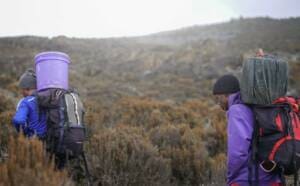Introduction
Safari packing list
When it comes to planning for your safari, proper safari packing list is key to ensuring your comfort and enjoyment throughout your journey. Safaris often start early in the morning, and you can expect to be on open safari vehicles with little protection from the elements. Dressing in layers is essential to adapting to changing weather conditions throughout the day. To help you make the most of your safari experience, we have curated the ultimate safari packing list that covers all aspects of your adventure.
Clothing Essentials for Safaris
To stay comfortable and protected during your safari, it’s essential to pack the right clothing. Here are the essential items you should include in your safari packing list wardrobe:
Tops to make sure in your safari packing list
- Lightweight, breathable shirts
- Long-sleeved shirts for sun and insect protection
- Sweat-wicking t-shirts for hot days
- Fleece jackets or sweaters for cooler evenings
Bottoms to make sure is in your safari packing list
- Comfortable safari pants or trousers
- Shorts for hot weather
- Convertible pants for versatility
- Leggings or long underwear for layering
Outerwear to make sure is available in your safari packing list
- Lightweight rain jacket for unexpected showers
- Windbreaker for protection against chilly winds
- A warm jacket or fleece for colder safaris
- Hat or cap for sun protection
Footwear to make sure is available in your safari packing list
- Sturdy, comfortable walking shoes or hiking boots
- Sandals or flip-flops for relaxation at camp
- Socks for various weather conditions
- Gaiters for protection against insects and thorny vegetation
Accessories to make sure are available in your safari packing list
- Sunglasses with UV protection
- Buff or scarf for dust and sun protection
- Gloves for colder safaris
- Swimsuits for swimming opportunities

Safari Packing List: Tips for Safari Luggage
Choosing the right luggage for your safari is crucial for convenience and ease of travel. Here are some tips to consider when packing your safari luggage:
Suitcase or Duffel Bag more important in your safari packing list?
- A soft-sided duffel bag is often more practical than a hard-shell suitcase, as it is easier to fit into safari vehicles.
- Ensure your luggage is durable and water-resistant to protect your belongings from dust and rain.
Size and Weight Restrictions
- Check with your safari provider for any specific size and weight restrictions for luggage.
- Consider packing light to make transportation and the handling of luggage more manageable.
Packing Cubes and Compression Bags
- Use packing cubes or compression bags to maximize space and keep your belongings organized.
- Roll your clothing instead of folding it to minimize wrinkles and save space.
Essential Documents and Medications available in your safari packing list
- Keep important documents such as passports, visas, and travel insurance in a secure and easily accessible place.
- Pack necessary medications in your carry-on to ensure easy access during your journey.
Important Documents to make sure are available in your safari packing list
Passport and Visa: Ensure your passport is valid for at least six months beyond your travel dates and that you have the necessary visas for the countries you’ll be visiting.
Travel Insurance: Carry a copy of your travel insurance policy, including emergency contact numbers. This provides coverage for unexpected medical expenses, trip cancellations, and other unforeseen events.
Flight Tickets and Itinerary: Keep printed copies of your flight tickets, accommodation bookings, and safari itineraries. Also, store electronic versions in a secure cloud storage.
Health and Vaccination Records: Some countries may require proof of certain vaccinations. Carry your vaccination records, including yellow fever if applicable.
Emergency Contact Information: Maintain a list of emergency contacts, including local embassy or consulate numbers, and share these details with a family member or friend back home.
Essential Medications to make sure available in your safari packing list
Prescription Medications: Pack an ample supply of any prescription medications you’re taking, along with a copy of the prescription itself.
Basic First Aid Kit: Include items like adhesive bandages, antiseptic wipes, pain relievers, and any personal medications you might need in case of minor injuries or illnesses.
Anti-Malaria Medication: Consult with a healthcare professional before your trip to determine if you need anti-malaria medication for the safari region.
Motion Sickness Medication: If you’re prone to motion sickness, consider carrying medication for game drives or bumpy roads.
Allergy Medication: If you have allergies, ensure you have the necessary antihistamines or other medications.
Additional Tips for safari packing list
Medication Information: Carry medications in their original packaging to avoid confusion at customs and provide information in case of emergencies.
Translation: If traveling to a region where language might be a barrier, consider having medication names and instructions translated into the local language.
Secure Storage: Keep medications and important documents in a waterproof pouch or bag to protect them from dust, moisture, and potential spills.
Must-Have Safari packing list Accessories
In addition to clothing, there are several essential accessories that will enhance your safari experience. Here are some must-have accessories to include in your packing list:
Binoculars
- A good pair of binoculars will allow you to spot wildlife from a distance and appreciate the details of nature.
- Look for binoculars with a magnification of at least 8x and a wide field of view.
Camera and Photography Gear in your safari packing list
- Capture the incredible moments of your safari with a quality camera and lenses.
- Consider bringing a tripod or monopod for stability during wildlife photography.
Power Bank and Adapters
- Safaris often take you to remote areas with limited access to electricity.
- Pack a power bank to keep your devices charged and bring adapters for international plug types.
Headlamp or Flashlight for safari packing list
- A headlamp or flashlight is essential for navigating in low-light conditions, especially during early morning or evening activities.
- Ensure you have spare batteries for extended use.
Insect Repellent and Sunscreen
- Protect yourself from insects and the sun’s harmful rays with effective insect repellent and sunscreen.
- Look for products with high SPF and long-lasting protection.
For more information on safari accessories, visit Safari Accessories Advice .
Gear for Different Types of Safaris
Depending on the type of safari you choose, there may be specific gear requirements. Here are some additional items to consider based on different types of safaris:
Game Drive Safaris
- Pack a comfortable cushion or seat pad for long game drives.
- Consider a wildlife guidebook to help you identify and learn about the animals you encounter.
Walking Safaris
- Bring a comfortable daypack to carry water, snacks, and essentials during walking safaris.
- Lightweight, breathable hiking clothes and sturdy hiking boots are essential.
Canoe or Paddling Safaris
- Include a dry bag to protect your belongings from water during canoe or paddling safaris.
- Pack quick-drying clothes that provide sun and insect protection.
Horse Safaris
- If you plan to go on a horse safari, bring appropriate riding gear, including a helmet, riding boots, and comfortable pants.
- Don’t forget to pack sunscreen for sun protection during long rides.
Gorilla Safaris
- Follow the specific guidelines provided by your safari operator for gorilla safaris, including clothing recommendations and rules for interacting with the gorillas.
- Consider bringing a walking stick for stability during gorilla trekking.
Mountain Trekking Safaris
- For mountain trekking safaris, pack warm layers, including insulated jackets, thermal base layers, and gloves.
- Good quality hiking boots with ankle support are essential for trekking on rugged terrains.
For more details on Trekking gear visit our page Kilimanjaro Gear List
Safari Packing list for Outdoor Activities
While safaris are the main focus of your trip, you may also have opportunities for other outdoor activities. Here are some additional items to consider packing:
Swimming and Water Activities
- Pack a swimsuit for swimming pools or natural water bodies at your safari lodge.
- Include a quick-drying towel for convenience.
Camping Gear
- If your safari includes camping, pack a camping tent, sleeping bag, and camping stove.
- Don’t forget essentials like a camping pillow and cooking utensils.
Hiking and Trekking Gear
- If you plan to explore hiking trails or go on treks, include appropriate hiking gear such as trekking poles, a hydration bladder, and a daypack. Get more info for trekking Gear
Birdwatching
- If birdwatching is of interest, bring a bird identification book or app, along with binoculars and a notepad.
Remember to adapt your packing list based on the specific activities and itinerary of your safari.
Considerations for Longer Safaris
If you’re embarking on a longer safari, there are a few additional considerations to keep in mind:
Laundry Services
- Check if your safari lodge or camp offers laundry services.
- If laundry is available, pack fewer clothing items and plan to have them washed during your stay.
Packing for Different Climates
- If your safari includes visits to different regions with varying climates, pack accordingly.
- Layering is key to adapt to temperature changes throughout your journey.
Space and Weight Constraints
- Be mindful of space and weight limitations, especially if you’re traveling with limited baggage allowance.
- Consider packing versatile items that can be mixed and matched.
Guidelines for Packing for a Safari
Before you start packing, here are some general guidelines to keep in mind:
- Pack light and focus on essentials.
- Check the weather forecast for your safari destination and pack accordingly.
- Opt for neutral-colored clothing to blend in with the natural surroundings.
- Avoid bright colors that may attract insects or disturb wildlife.
- Don’t forget to pack personal toiletries, medications, and any necessary travel documents.
Conclusion
With our ultimate safari packing list, you’re now equipped with all the information you need to pack for your safari adventure. Remember to consider the specific requirements of your chosen safari type and destination. By packing the right clothing, gear, and accessories, you’ll be fully prepared to make the most of your safari experience. So, get ready to embark on an incredible wildlife adventure and create memories that will last a lifetime.






